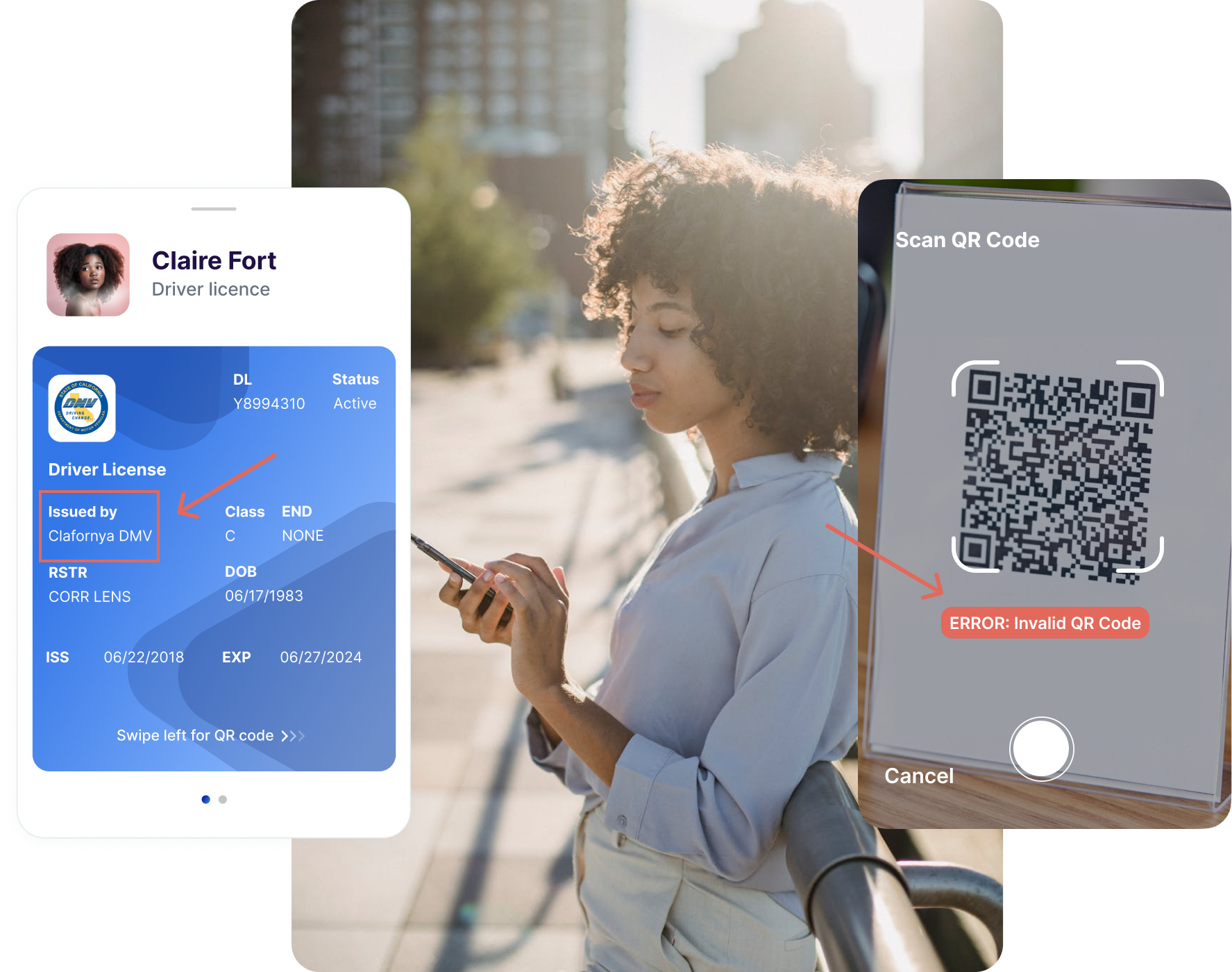Key Takeaways
Digital signatures are the foundation of trust in digital identity verification. They ensure that credentials such as mobile driver’s licenses are authentic, tamper-resistant, and issued by the correct authority. Built on public key infrastructure (PKI), this technology underpins the security of modern identity systems.
Why Digital Signatures Matter
To trust a mobile driver’s license, verifiers need proof that the credential truly came from the DMV and has not been altered. Digital signatures provide that assurance. When the DMV issues a credential, it applies a unique cryptographic signature saying, “I authorize this.” Verifiers can check this signature instantly, ensuring authenticity with near-zero chance of forgery.
This goes far beyond scanning an ID card. Each credential carries an embedded seal of trust that can be mathematically verified, protecting both issuers and holders.
How PKI Works
The backbone of digital signatures is public key infrastructure (PKI). PKI governs how digital certificates are created and how they secure sensitive data. It uses asymmetric, or key-pair, cryptography, which relies on two mathematically linked keys:
- A private key known only to the issuing authority
- A public key that anyone can use to verify signatures
Only the private key can create a signature, while the public key confirms its validity. The strength of PKI comes from the mathematical impossibility of deriving the private key from the public one.
Certificates and Authenticity
PKI also issues digital certificates that prove the legitimacy of public keys. For example, if a DMV signs a mobile driver’s license, the certificate confirms it truly belongs to the DMV. An imposter like “State of Clafornya DMV” would immediately be rejected as unauthenticated.
Certificates act like passports for cryptographic systems, ensuring verifiers know who issued a credential and whether they are trustworthy.

Role of Hardware Security Modules
Keys must be protected with extreme care. Hardware security modules (HSMs) are tamper-resistant devices that store private keys, perform encryption, and generate digital signatures. They may sit in server racks, secure facilities, or portable units such as a USB stick. HSMs come with different grades in terms of the security levels provided.
To ensure consistency, the Federal Information Processing Standards (FIPS) Publication 140 defines security requirements for cryptographic modules. At the highest levels, HSMs include safeguards so advanced they can erase keys if tampering is detected. Federal agencies like the TSA require compliance with FIPS 140-3 for sensitive identity systems.

Root Keys and Signer Keys
DMVs use a layered key approach. A root key, secured in the highest-grade HSM, authorizes secondary document signer keys. These signer keys handle the day-to-day issuance of credentials. This separation of duties keeps the root key highly protected while still enabling issuance at scale.
Signer keys are rotated frequently, sometimes every thirty days, to limit the impact if one is compromised. This regular refresh adds resilience against potential breaches.
Preventing and Detecting Fraud
Even with strong digital signatures, new fraud detection methods are essential. Zero-knowledge systems can flag suspicious behavior, like the same driver’s license being used across multiple states within minutes, without creating a central database of personal data. This protects privacy while enhancing security.
Another risk is insider threats. If DMV employees collude with attackers, they could misuse authority to create fraudulent records. Strong oversight, multi-step verification, and requiring multiple proofs of identity can mitigate this risk.
Why This Matters
Digital signatures are not just a technical detail. They are central to secure digital onboarding, fraud prevention software, and compliance automation software. Without them, organizations would be forced to rely on weaker methods such as image scans or manual phone calls. With them, credentials can be issued and verified at scale in a privacy-preserving way.
Conclusion
Digital signatures ensure that credentials can be trusted online. By combining cryptography, PKI, and HSM safeguards, they make it virtually impossible for bad actors to forge or alter credentials. This reduces fraud and builds the foundation for secure, interoperable digital identity solutions. As more states and industries adopt mobile driver’s licenses and other verifiable digital credentials, digital signatures will remain the invisible infrastructure that keeps them trustworthy.

